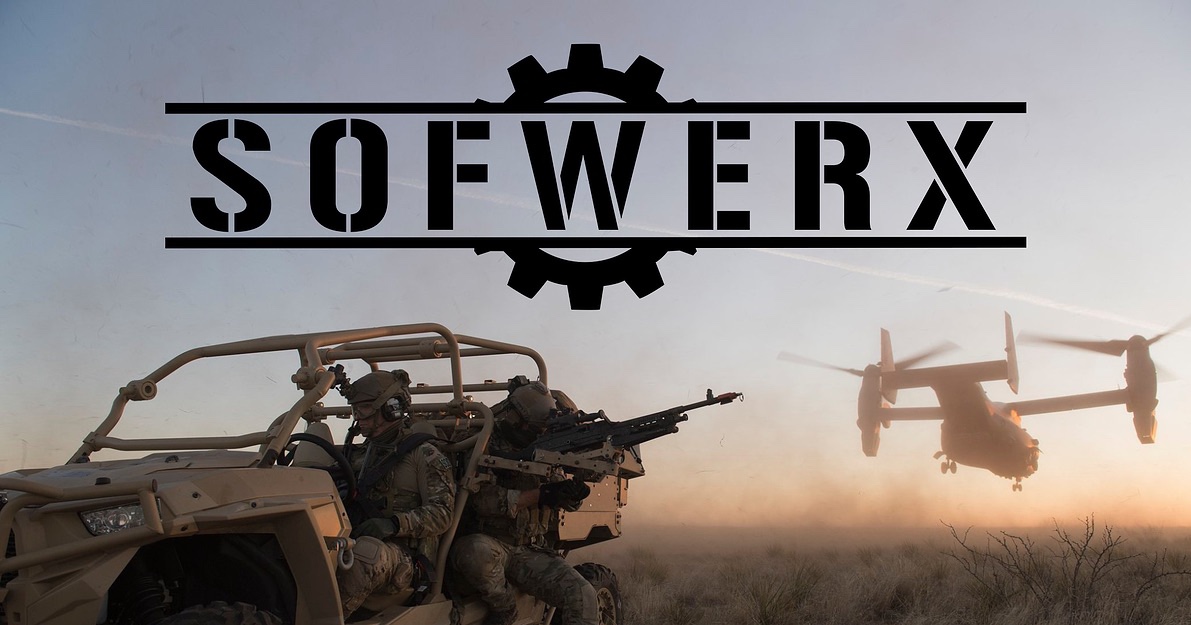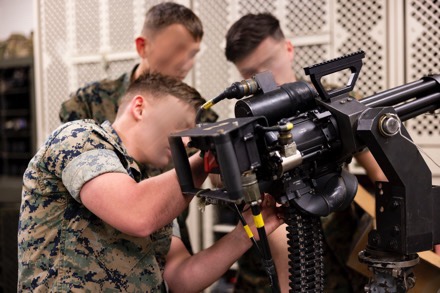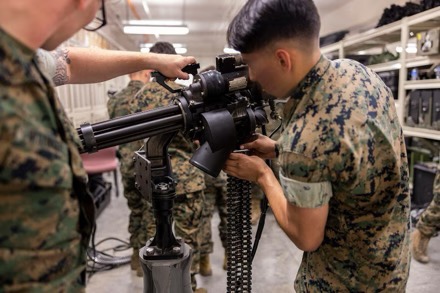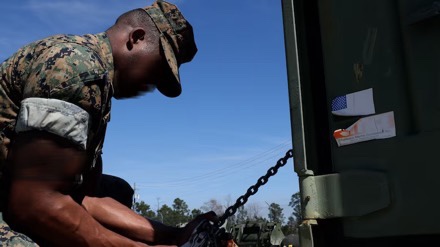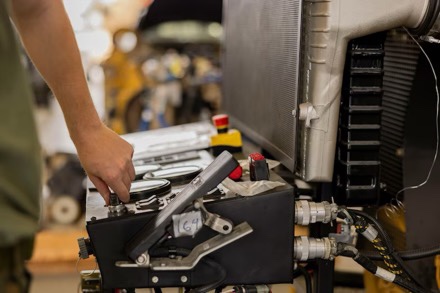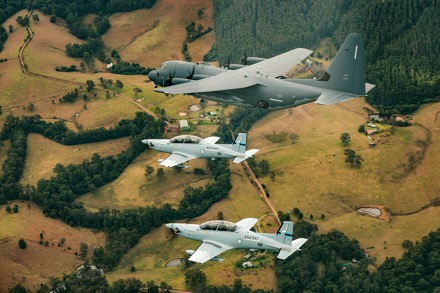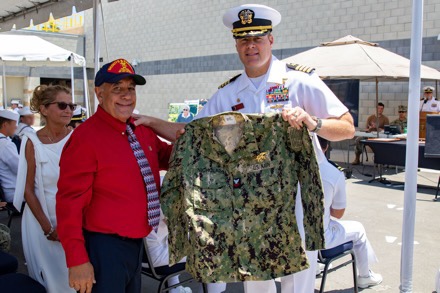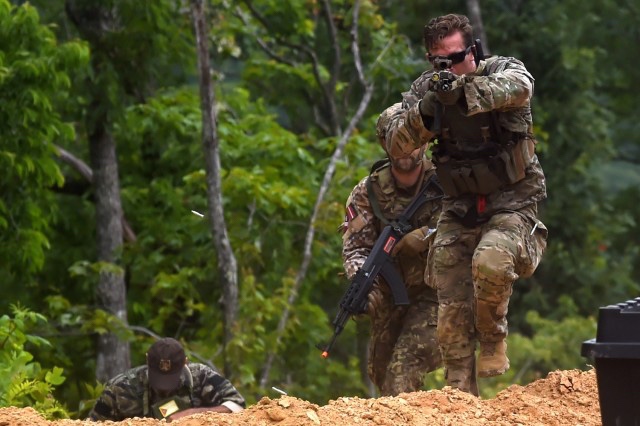
BECKLEY, W.Va. – The wind danced through the trees as pewter-colored clouds hinted at heavy rain. Soldiers went about their duties at a rocket launcher site on a hillside clearing in an otherwise thickly forested area. Aside from the trees, all was quiet. But as the wind gusted again, Soldiers with the 19th Special Forces Group suddenly appeared from the woods in a coordinated assault to seize control of the site.
Located deep in the West Virginia hills, the launcher site and the attack were part of the culminating exercise for one training lane in exercise Ridge Runner, a two-week special operations training exercise hosted by the West Virginia National Guard and the Irregular Warfare Center.
The exercise included more than 420 troops, primarily with the 19th Special Forces Group headquartered in the Utah Army National Guard, and allies and partners from 16 nations. Training scenarios focused on core Special Forces mission sets, including working with foreign forces, counterinsurgency operations and irregular warfare.
“Irregular warfare is actually a difficult term to describe because there’s no doctrinal [definition] for irregular warfare,” said an operations sergeant major with the 19th SFG who oversaw one of the exercise’s training lanes. “It’s designed to be very broad because it includes hybrid threats, it includes security force assistance and doing not only counterinsurgency and unconventional warfare, but also doing foreign internal defense.”
Many of those mission sets were tied together throughout the training scenario. Exercise participants — mostly made up of Special Forces ODAs, or operational detachment alpha teams, the basic SF tactical element — assimilated into West Virginia communities in two simulated nations and met with actual local government officials, law enforcement and emergency services personnel.
They monitored simulated economic and political situations in each “nation” through simulated newscasts and media engagements, and mirrored responses to them with procedures and operations that would be used during actual deployments.
Information from those engagements drove the training and resulting missions, eventually countering a simulated invasion by hostile forces from neighboring nations.
“The change in the scenario replicates what our forces would experience if they were in a friendly country about to be invaded by a hostile force,” said the sergeant major.
Teams acting as the opposing forces, or OPFOR, also had to shift in line with those scenario changes — and their actions often caused other shifts by the ODAs.
“What the OPFOR brings to the exercise is kind of a realistic aspect to it,” said a staff sergeant with the 19th SFG on an OPFOR team. “We’re able to do our own planning against what we know or think that the partner force of the ODA is doing. And so, it’s more realistic of how an enemy would react to those situations.”
The exercise also tied into larger service-wide shifts as the Army and Army National Guard move from counterinsurgency operations to preparing for near-peer threats and potential large-scale operations.
“You’re getting away from what for the last 20 years has been the main effort [counterinsurgency operations] and you’re now supporting the warfighter in different capacities,” said the sergeant major. “During the Global War on Terror, special operations, we were doing direct action. We were doing FID [foreign internal defense], we were doing counterinsurgency and going after specific terrorist cells.”
Some tasks and mission sets may be similar in future operations, but their large-scale application has changed.
“This is different,” said the sergeant major. “This is full-spectrum warfare. It’s preparing for invasion or preparing the territories that we would operate in, in order to facilitate conventional battle lines.”
Training and ensuring high readiness for that shift is key, he said.
“Irregular warfare is our way to do that through more low visibility operations and our ability to work around the civilian populace and provide that support to the conventional military.”
Ridge Runner, and similar exercises, help teams refine those skills.
“It allows you to be very creative,” said the sergeant major. “You have to get very resourceful and kind of adapt to the changing environment and realize that you don’t have the freedom of movement that we did in other places. It’s no longer about having air supremacy. It’s no longer about having open comms with higher [headquarters].”
And the exercise also helped teams focus on basic tactical elements.
“We’re able to work on some of our small unit tactics that we’re doing together as this six-man contingent as well,” said the staff sergeant. “We’ve been able to have those discussions, work on basic patrolling as well and all those things that are in the Ranger handbook and are the fundamentals of success for an ODA.”
That’s critical, as the 19th and 20th SFGs — the two Army Guard Special Forces groups — are integrated into special operations missions worldwide.
“The 19th and 20th Group guys get to do that just as much as their active-duty counterparts,” said the sergeant major. “They deploy to the same areas, they go to the same schools, they work with the same partners.”
And for the sergeant major, that capability is part of the uniqueness of Army Guard Special Forces units.
“[It’s] an opportunity to serve in a special operations capacity, wearing a Green Beret and operating in some of the highest missions,” he said.
By SFC Jon Soucy, National Guard Bureau



